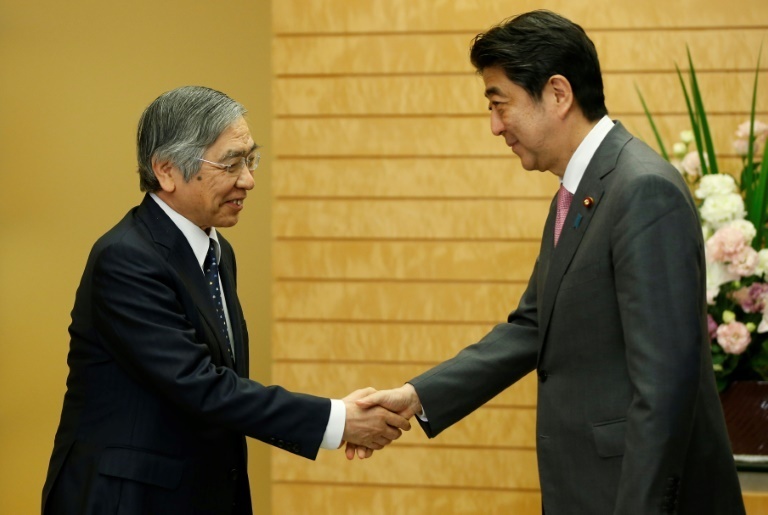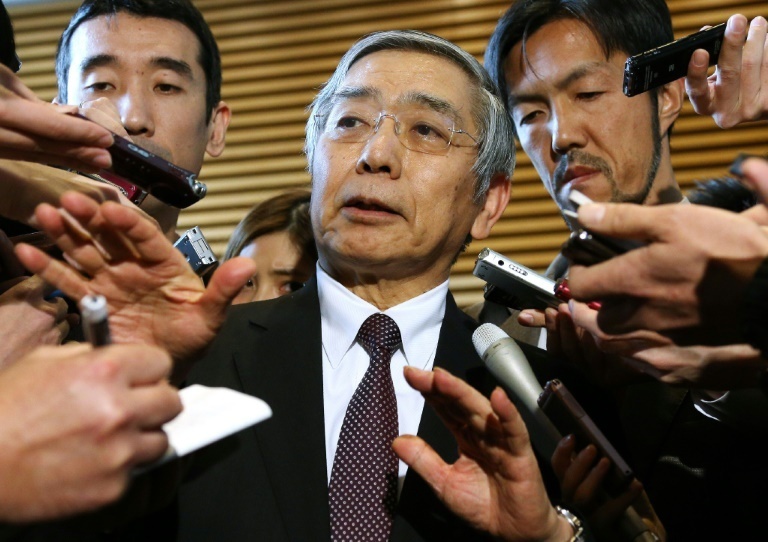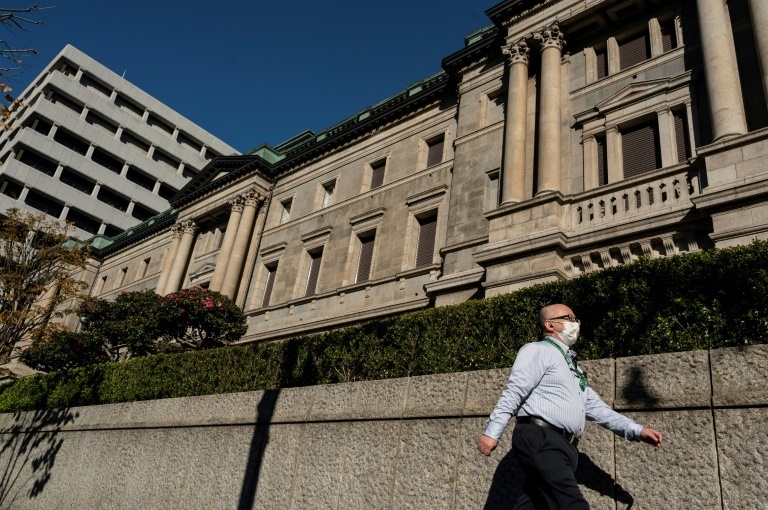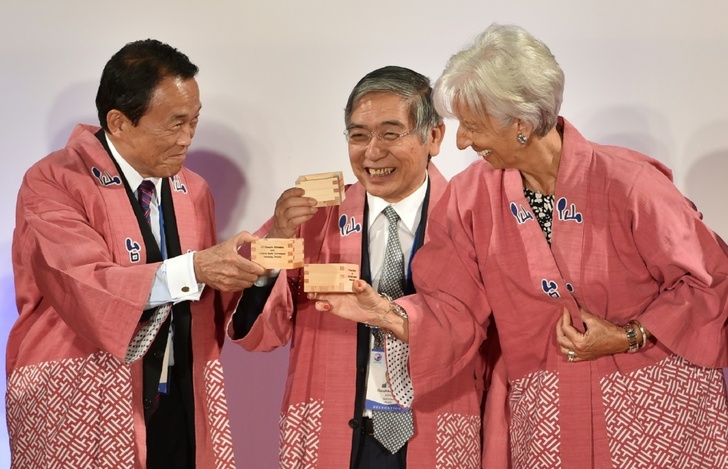Bank of Japan governor Haruhiko Kuroda is stepping down after a 10-year tenure defined by his signature "bazooka" of easy-money policies, designed to reboot the country's moribund economy.
Since he took charge, the central bank's assets have quadrupled, surpassing GDP in a first for a Group of Seven nation.
As economics professor Kazuo Ueda is approved by parliament to replace Kuroda, whose second and final term ends on April 8, here are five key moments from his time at the helm -- the longest ever for a BoJ chief.
- 'Abenomics' architect -
In 2013, then-prime minister Shinzo Abe tasked Kuroda with getting his "Abenomics" policy off the ground: an attempt to blast Japan's stagnant economy back to growth after the harmful deflation of the 1990s and 2000s.

Perhaps most importantly, he was dedicated to the government's ambitions to ramp inflation up to two percent through a so-called "bazooka" of asset purchases.
As BoJ chief, Kuroda vowed to do "everything possible" to reverse Japan's "lost decades", setting an optimistic timeframe of two years to hit the two-percent target.
- Peter Pan -
It wasn't an easy task, however. By 2015, Japan's economy was again spluttering, with inflation close to zero.
But Kuroda remained confident, citing the story of Peter Pan and its message that "the moment you doubt whether you can fly, you cease forever to be able to do it".
The reference would later turn against him, as commentators accused Kuroda of living in a "fantasy world" given his confidence in the face of sluggish inflation.
- Drastic measures -
The Bank of Japan began spending hundreds of billions of dollars a year on government bonds.

In January 2016, the BoJ adopted a negative interest rate of -0.1 percent, effectively charging banks to keep their money there with the hope that it would incentivise them to loan out capital, boosting economic activity.
Later that year, Kuroda announced another step -- buying as many or few 10-year government bonds as necessary to ensure their yields remained steady at zero.
- Stalemate -
For years, the bank stuck to its ultra-loose stance.
Kuroda appeared to try everything, but both prices and the economy were still far from booming.
A lack of major reforms to raise salaries, and the challenge of a rapidly ageing population meant the country grew more reliant on the BoJ's easing, along with economic stimulus from the government.
The economic shock of the Covid-19 pandemic made the situation even worse.
- Tumbling yen -
In 2022, central banks worldwide began rounds of aggressive tightening to tame soaring inflation -- but the Bank of Japan did not, sticking instead to its ultra-low rates.
Japanese inflation has hit a multi-decade high of 4.2 percent. But the BoJ sees the trend as unsustainable, driven by temporary factors like the war in Ukraine rather than consumer demand and wage increases.

Kuroda made a surprise move in December, tweaking the bank's longstanding easing programme by widening the band in which it allows rates for 10-year government bonds to move.
But at his final policy meeting, which concluded Friday, he stood firm again and made no changes to the bank's negative interest rate or bond yield control.
etb-kaf/dan
© Agence France-Presse
Your content is great. However, if any of the content contained herein violates any rights of yours, including those of copyright, please contact us immediately by e-mail at media[@]kissrpr.com.
Source: Story.KISSPR.com

